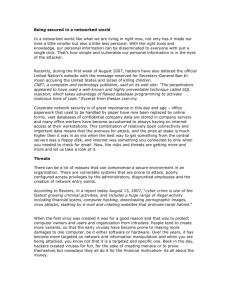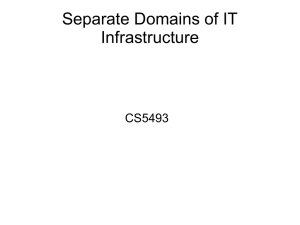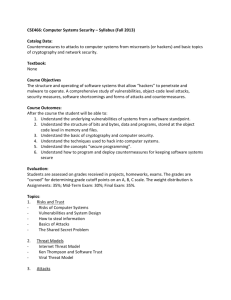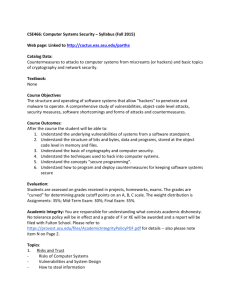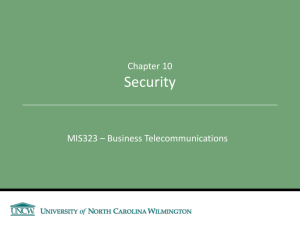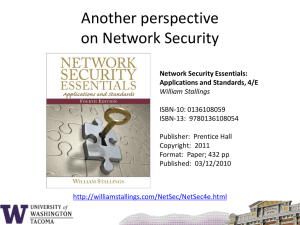Lecture 3
advertisement
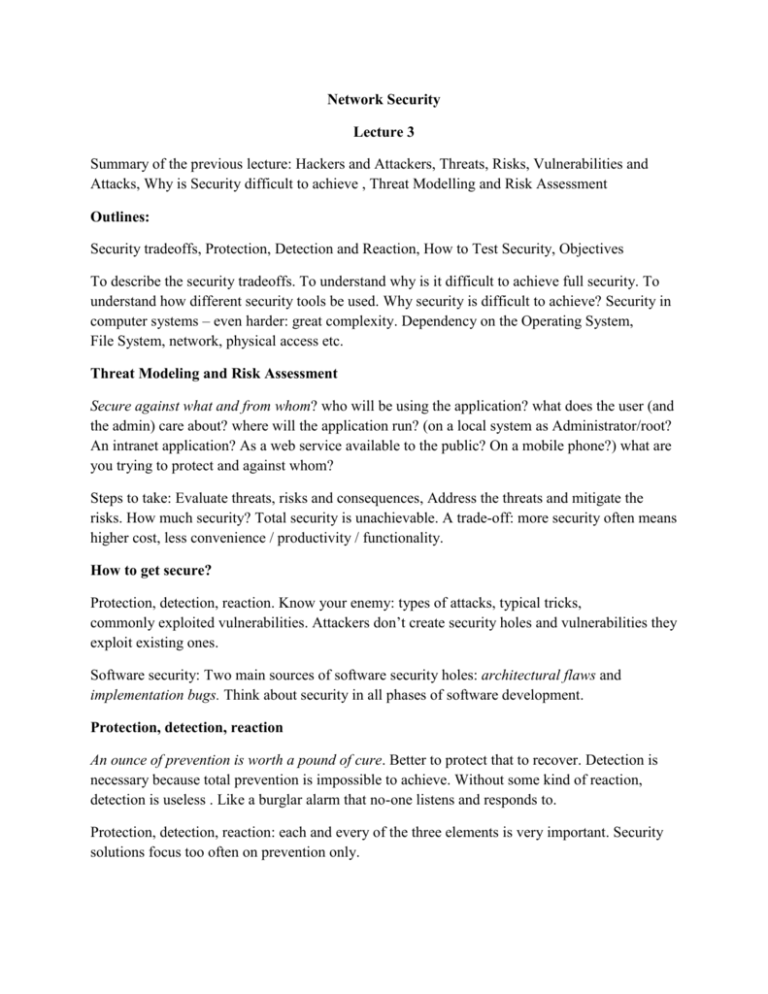
Network Security Lecture 3 Summary of the previous lecture: Hackers and Attackers, Threats, Risks, Vulnerabilities and Attacks, Why is Security difficult to achieve , Threat Modelling and Risk Assessment Outlines: Security tradeoffs, Protection, Detection and Reaction, How to Test Security, Objectives To describe the security tradeoffs. To understand why is it difficult to achieve full security. To understand how different security tools be used. Why security is difficult to achieve? Security in computer systems – even harder: great complexity. Dependency on the Operating System, File System, network, physical access etc. Threat Modeling and Risk Assessment Secure against what and from whom? who will be using the application? what does the user (and the admin) care about? where will the application run? (on a local system as Administrator/root? An intranet application? As a web service available to the public? On a mobile phone?) what are you trying to protect and against whom? Steps to take: Evaluate threats, risks and consequences, Address the threats and mitigate the risks. How much security? Total security is unachievable. A trade-off: more security often means higher cost, less convenience / productivity / functionality. How to get secure? Protection, detection, reaction. Know your enemy: types of attacks, typical tricks, commonly exploited vulnerabilities. Attackers don’t create security holes and vulnerabilities they exploit existing ones. Software security: Two main sources of software security holes: architectural flaws and implementation bugs. Think about security in all phases of software development. Protection, detection, reaction An ounce of prevention is worth a pound of cure. Better to protect that to recover. Detection is necessary because total prevention is impossible to achieve. Without some kind of reaction, detection is useless . Like a burglar alarm that no-one listens and responds to. Protection, detection, reaction: each and every of the three elements is very important. Security solutions focus too often on prevention only. (Network/Host) Intrusion Detection Systems – tools for detecting network and system level attacks. For some threats, detection (and therefore reaction) . Is not possible, so strong protection is crucial. For example: eavesdropping on Internet transmission. Is a particular security measure good? What problem does it solve? Whether it really solves the problem you have. How well does it solve the problem? Will it work as expected? What new problems does it add? What are the economic and social costs? Cost of implementation, lost functionality or productivity. Given the above, is it worth the costs? (These questions were proposed by Bruce Schneier) Remember, There is never a free lunch. Means don’t go for free software, free wallpapers etc. No one is going to give you anything free. Summary of today’s lecture In today’s lecture, we talked about why is it difficult to achieve absolute security and what are the security tradeoffs. We also discussed the phenomenon of Detection, Protection and Reaction. We also learnt about different types of attacks such as Active and Passive attacks. Next lecture topics Firewall Concept. How could firewalls be implemented through software and hardware, We will have some more discussion on Security and Protection. The End
